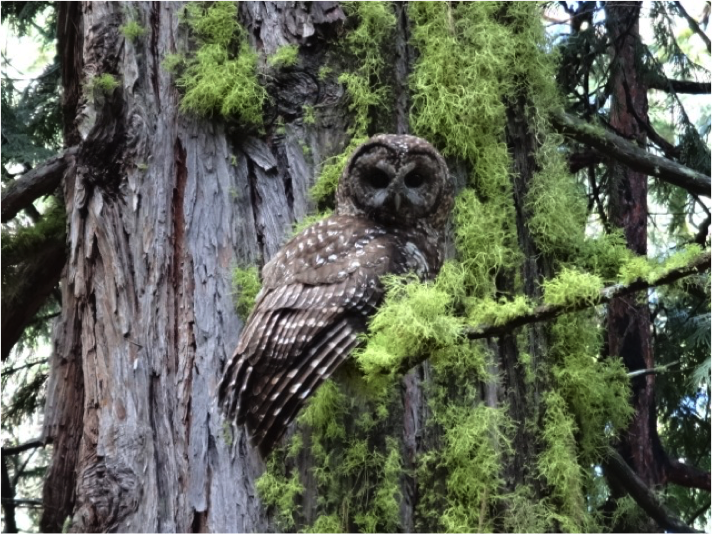
Photo Tom Harrington
The California spotted owl once flourished across the historic, old-growth conifer habitat of the Sierra Nevada. Decades of railroad logging stripped many prime forest areas. Then came widespread clearcutting on national forest land, coupled with continued clearcuts on private forest lands. The result has been a dramatic loss of spotted owl habitat.
The Forest Service has taken steps over recent years to protect spotted owl habitat on its lands (by shifting to thinning logging instead of clearcuts), but high-severity wildfires, drought-caused tree mortality, and SPI’s persistent clearcut-type logging on its lands have further stressed spotted owl populations. Because of this, the California spotted owl is being considered for listing under the Endangered Species Act. In response, the Forest Service recently released its latest Conservation Strategy for the owl - directing forest projects to retain most large trees and to minimize logging within nesting territories.
Knowing that any listing of the California spotted owl could cause new restrictions on the company’s logging practices, Sierra Pacific Industries (SPI) has proposed a Habitat Conservation Plan (HCP) for both the California spotted owl and the Northern spotted owl. (The Northern spotted owl is already listed and occurs on SPI lands in Northern California’s coast range). Getting approval of an HCP by the U.S. Fish and Wildlife Service could lead to a 50-year “take” permit (which allows for harm to the owls) for all SPI activities on its private lands.
CSERC’s on-going review of SPI’s proposed HCP plan has identified numerous key flaws. The HCP and EIS admit that over 600 occupied owl “activity centers” may be modified or destroyed by SPI logging over the 50-year period. SPI claims it will create even more CA spotted owl habitat – but that claim is based on the debatable assumption that even-age young tree farms - planted after clearcuts - will somehow become suitable forest habitat for the owl at just 30-60 years of age. The HCP would allow SPI to continue to log thousands of acres each year with clearcuts and to remove the vast majority of large trees – and then do some minor actions to benefit the owl to compensate.
CSERC and other conservation groups will be pressing the U.S. Fish and Wildlife Service to require far more meaningful protections for owls and their habitat on SPI lands if SPI is to receive a 50-year permit to “take” (harm) spotted owls. Spotted owls are used by scientists as an indicator species for many other kinds of wildlife that are far more difficult to study and monitor.

